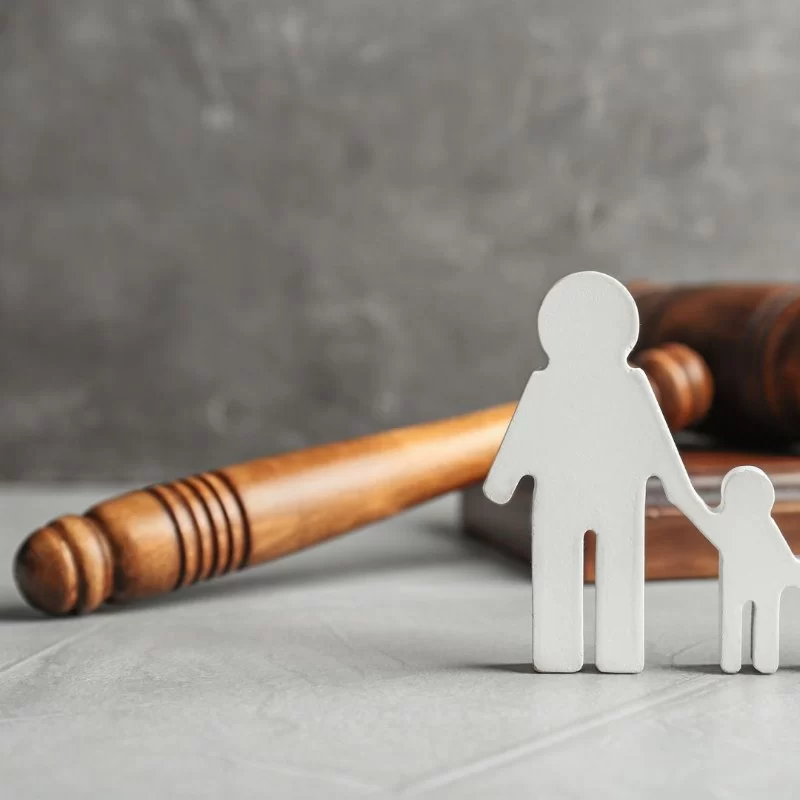- 1 - The Role of a Guardian ad Litem in Custody Cases
- 2 - When Is a Guardian ad Litem Appointed?
- 3 - Responsibilities and Duties of a Guardian ad Litem
- 4 - The Impact of a Guardian ad Litem on Custody Decisions
- 5 - Real-Life Cases and Insights on Guardian ad Litem’s Role
- 6 - How to Work with a Guardian ad Litem in Custody Cases
- 7 - Seeking Legal Assistance for Custody Cases
1. The Role of a Guardian ad Litem in Custody Cases
In custody cases, a Guardian ad Litem (GAL) plays a crucial role in ensuring that the best interests of the child are prioritized. A Guardian ad Litem is a court-appointed advocate who represents the child’s interests, independent of the parents or legal guardians. This role is especially important in cases where there may be a conflict of interest or when the child’s wishes need to be heard in a legal setting.
The Guardian ad Litem does not make custody decisions but offers recommendations to the court based on their findings. Their job is to investigate the circumstances surrounding the custody dispute and provide a report that reflects what they believe is in the best interest of the child.
2. When Is a Guardian ad Litem Appointed?
A Guardian ad Litem may be appointed during any custody dispute, particularly when the child’s welfare or safety is in question. Courts often appoint a GAL when:
- The parents cannot agree on custody arrangements.
- There are allegations of abuse or neglect.
- The child expresses a preference but needs an advocate to ensure their voice is heard appropriately.
- There are complex issues involved in the case that require an independent investigation.
In some jurisdictions, the GAL is appointed automatically in high-conflict custody cases. In other cases, a judge may order their appointment based on specific concerns raised during the proceedings.
3. Responsibilities and Duties of a Guardian ad Litem
The Guardian ad Litem has several important responsibilities. Their primary duty is to represent the child’s best interests, which involves a variety of tasks:
- Investigation: The GAL conducts an independent investigation into the child’s home environment, parental fitness, and overall well-being. This might include interviews with the child, parents, teachers, doctors, and other people involved in the child’s life.
- Advocacy: The GAL presents the findings of their investigation to the court, offering recommendations based on what they believe is best for the child. They may also attend hearings and provide testimony.
- Communication: The GAL must maintain open communication with the child, ensuring the child’s voice is accurately represented in court. They are responsible for interpreting the child’s needs and wishes in a way that is understandable to the court.
- Monitoring: In some cases, the GAL is also responsible for monitoring the child’s well-being during the proceedings and ensuring that court-ordered actions are being followed.
4. The Impact of a Guardian ad Litem on Custody Decisions
Although a Guardian ad Litem does not make the final decision in custody cases, their recommendations are highly influential. Courts rely on the GAL’s independent findings to help them make a decision that best serves the child’s welfare.
The GAL’s report and testimony can significantly affect the outcome of a case, especially if there are allegations of abuse, neglect, or substance abuse. Their observations can provide the court with a clearer picture of the child’s situation, which is critical for making a decision that minimizes harm to the child.
5. Real-Life Cases and Insights on Guardian ad Litem’s Role
In many high-conflict custody cases, the presence of a Guardian ad Litem has proven to be a key factor in ensuring a fair and thorough process. For example, a case in California involved two parents fighting for custody of their young daughter. After a lengthy investigation, the GAL discovered that one parent had been neglectful, and the child had expressed a preference to live with the other parent. The GAL’s report helped the court make a decision that prioritized the child’s safety and emotional needs, ultimately leading to a more positive outcome for the child.
Another example involves a case where both parents were involved in substance abuse, and the child’s safety was at risk. The Guardian ad Litem investigated both homes and recommended supervised visitation. The GAL’s involvement ensured the child was not placed in an unsafe situation, which ultimately led to a more secure and stable custody arrangement.
6. How to Work with a Guardian ad Litem in Custody Cases
Working with a Guardian ad Litem can be a critical part of navigating a custody dispute. If you find yourself in a case involving a GAL, it’s important to understand how to interact with them. Here are some tips:
- Be Transparent: Provide all relevant information about your relationship with the child and the other parent. The GAL’s job is to advocate for the child’s best interests, and transparency will help them understand the full picture.
- Respect the Process: Understand that the GAL is conducting an independent investigation and that their role is to ensure fairness. Cooperating with them, rather than opposing them, can help improve the outcome of the case.
- Keep the Child’s Interests in Mind: The GAL’s primary focus is on the child’s welfare. Always remember that their recommendations are based on what is in the best interest of the child, even if it may not align with your preferences.
7. Seeking Legal Assistance for Custody Cases
If you are involved in a custody dispute, having legal representation is essential to ensure your rights are protected. An experienced family law attorney can help you navigate the complexities of the case, communicate with the Guardian ad Litem, and advocate for your position in court. If you need expert legal advice, Fred Miller Lawyer is a trusted source for high-quality legal assistance in family law matters.
With the right guidance and support, you can ensure that your child’s best interests are met throughout the custody process.


 kevin conway esq
kevin conway esq wilhite law firm
wilhite law firm 2373 central park blvd denver co 80238
2373 central park blvd denver co 80238 kaufman injury law
kaufman injury law 620 east plumb lane
620 east plumb lane james a abate
james a abate